Japanese cargo ship arrives at space station to make one last delivery
A Japanese cargo ship arrived at the International Space Station today (May 25) to make one final delivery before its fleet is retired.
The unpiloted HTV-9 spacecraft pulled up to the space station early this morning to be captured by a robotic arm under the control of NASA astronaut Chris Cassidy. Cassidy, commander of the station's Expedition 63 crew, snared the 12-ton spacecraft as it and the station sailed 260 miles (418 kilometers) above Tanzania.
"It was an honor for Expedition 63 to be part of the final HTV mission, a vehicle that has contributed so greatly to the International Space Station program," Cassidy radioed to NASA's Mission Control in Houston after capturing the spacecraft.
Related: How Japan's HTV cargo ships work (infographic)
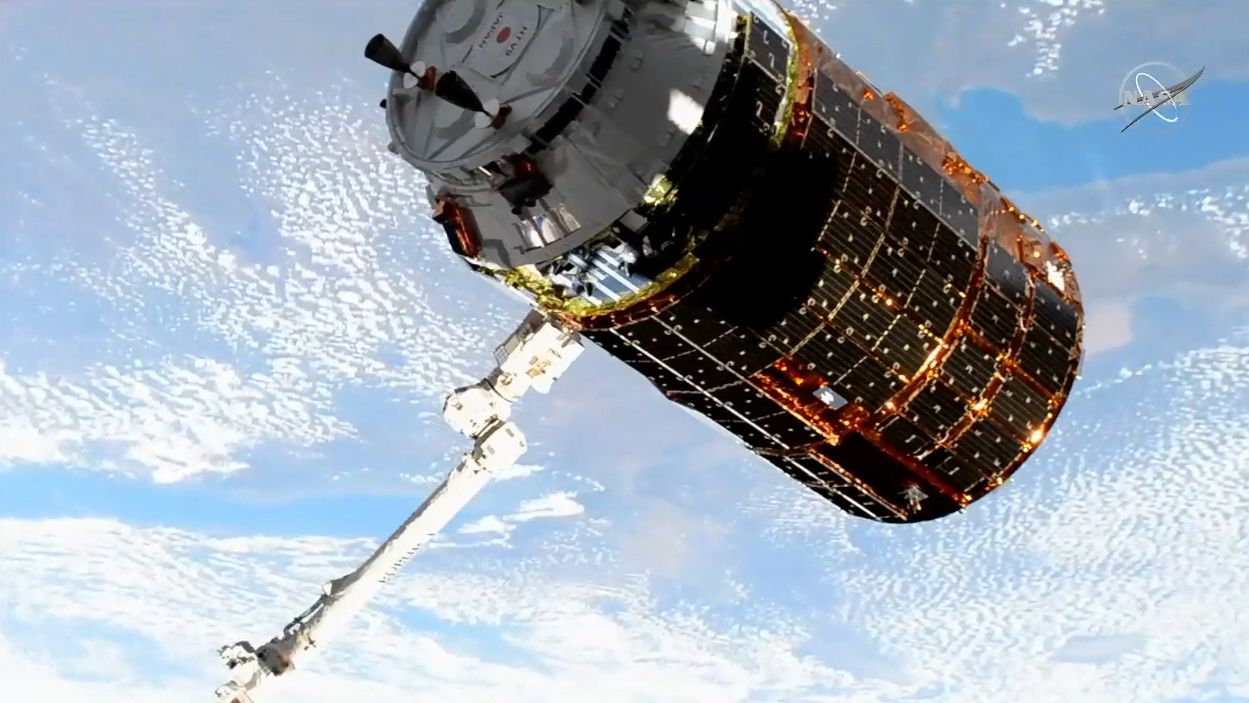
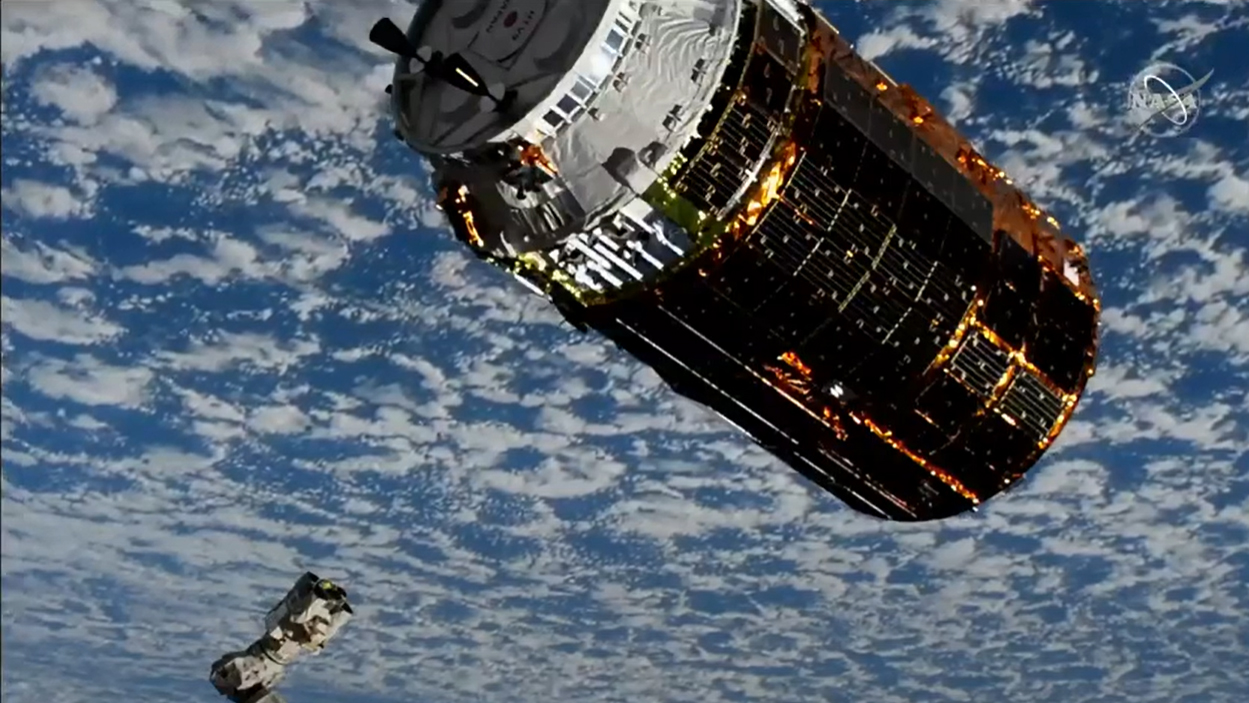
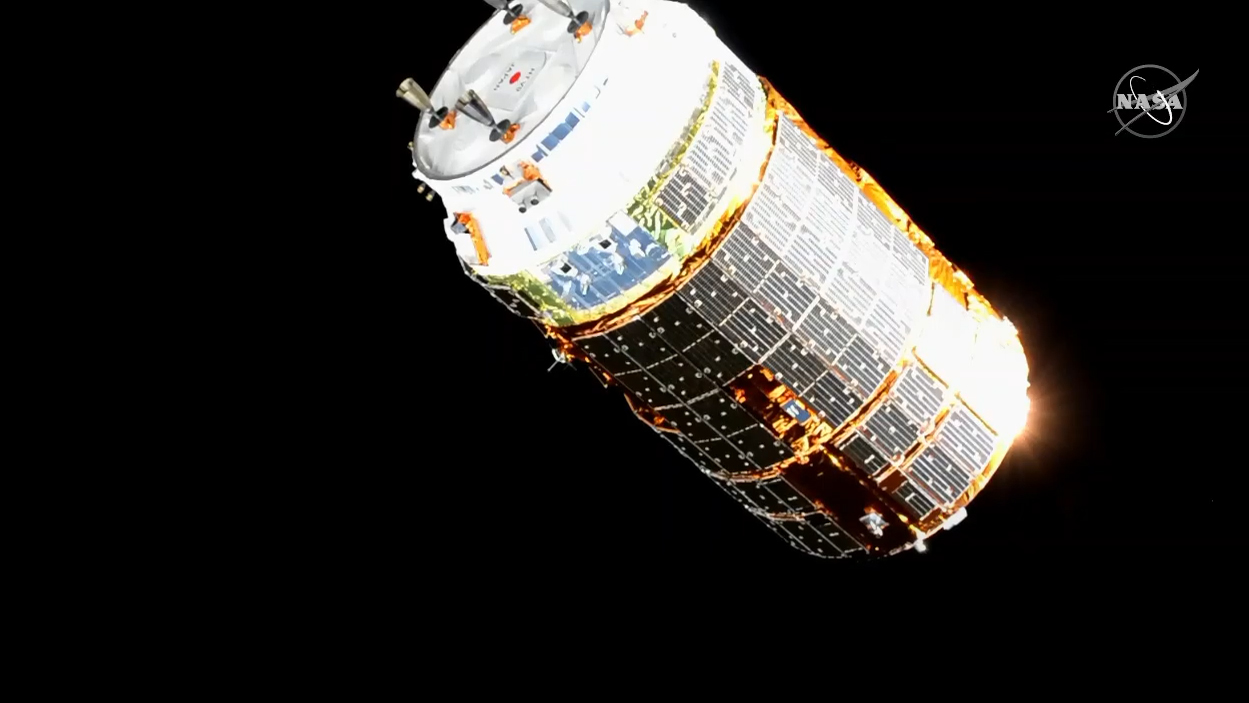
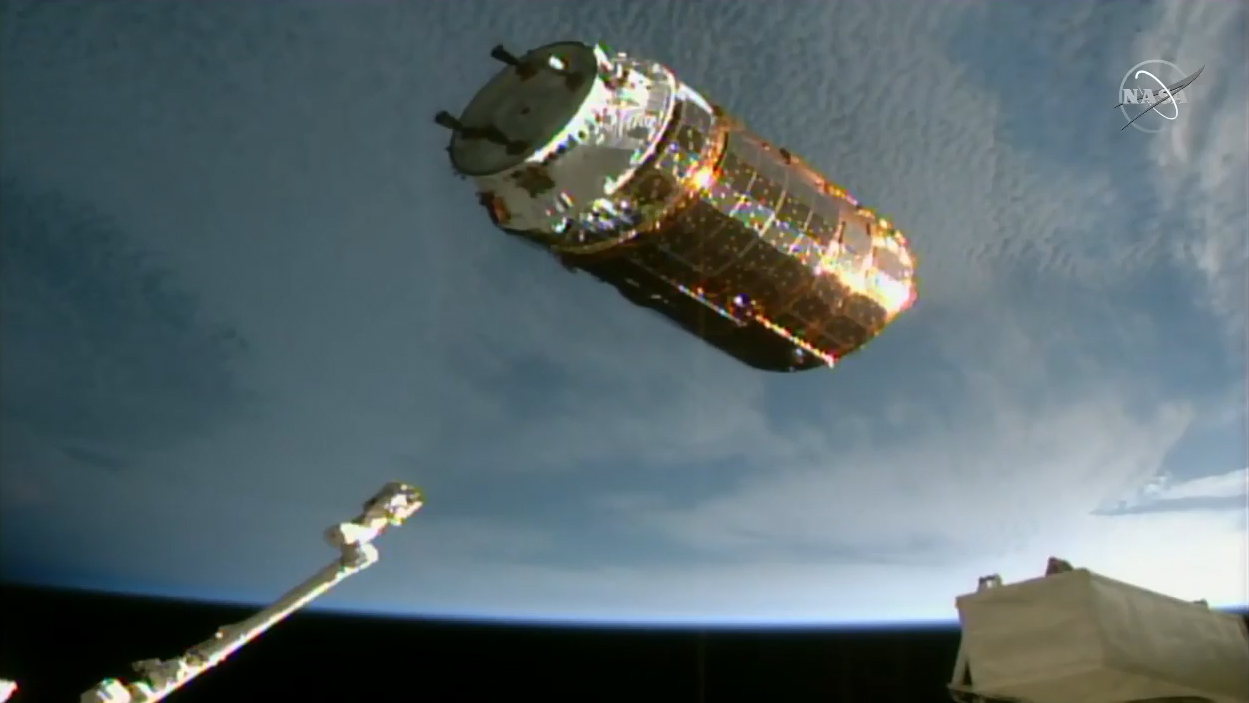
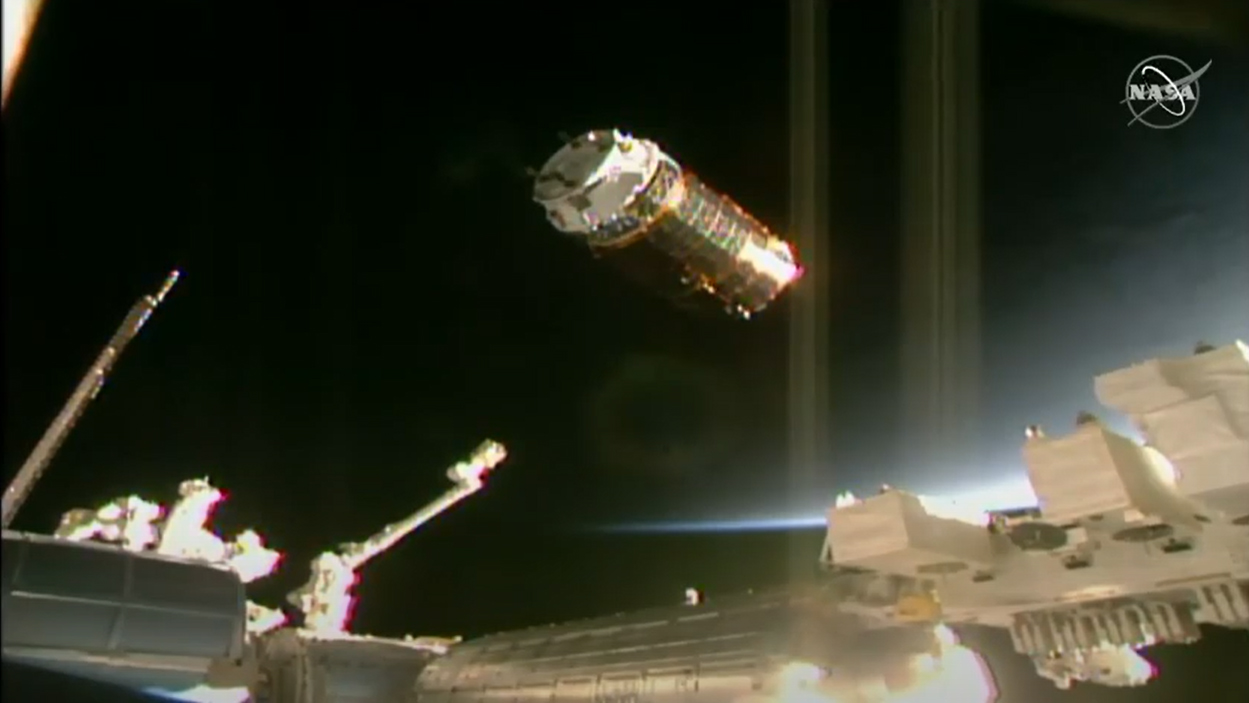
Built by the Japan Aerospace Exploration Agency (JAXA), HTV-9 — the name is short for H-II Transfer Vehicle 9 — is the latest in a series of disposable cargo ships that have hauled supplies to the station since 2009. It launched from Japan's Tanegashima Space Center on Wednesday (May 20) atop a Mitsubishi Heavy Industries H-IIB rocket, which also made its final flight with this mission.
JAXA is retiring its HTV spacecraft to make way for a new cargo ship called the HTV-X, which will launch on a new rocket, the H-III booster, beginning in 2022.
"Today's arrival of the final in the series of this genre of HTV vehicles marks a transition to a new and even more capable vehicle in the HTV-X which will soon make its debut," spacecraft communicator Leslie Ringo radioed the station crew from Mission Control at the Johnson Space Center.
Get the Space.com Newsletter
Breaking space news, the latest updates on rocket launches, skywatching events and more!
The HTV-X spacecraft will be able to dock itself at the station, eliminating the need for astronauts to pluck the vehicle from space with a robotic arm. The new spacecraft will also include a reusable pressurized module to fly cargo to and from the station.
Related: Japan's robotic space cargo ship fleet in photos
Japan's HTV spacecraft, known as Kounotori (Japanese for "white stork"), are 33 feet (10 meters) long and 14 feet (4.4 m) wide. They can haul up to 6 tons (5.4 metric tons) of supplies to the space station, either inside a pressurized compartment or in an external pallet for use outside.
The HTV-9 spacecraft is carrying more than 8,000 lbs. (3,600 kilograms) of supplies for the station's crew, including vital new batteries for the station's solar arrays that will be installed during a series of spacewalks later this year. HTV-9 is carrying food, water and science equipment for the station's crew. It is also testing a new wireless communication system at the station that will be used by the HTV-X vehicle, NASA officials said.
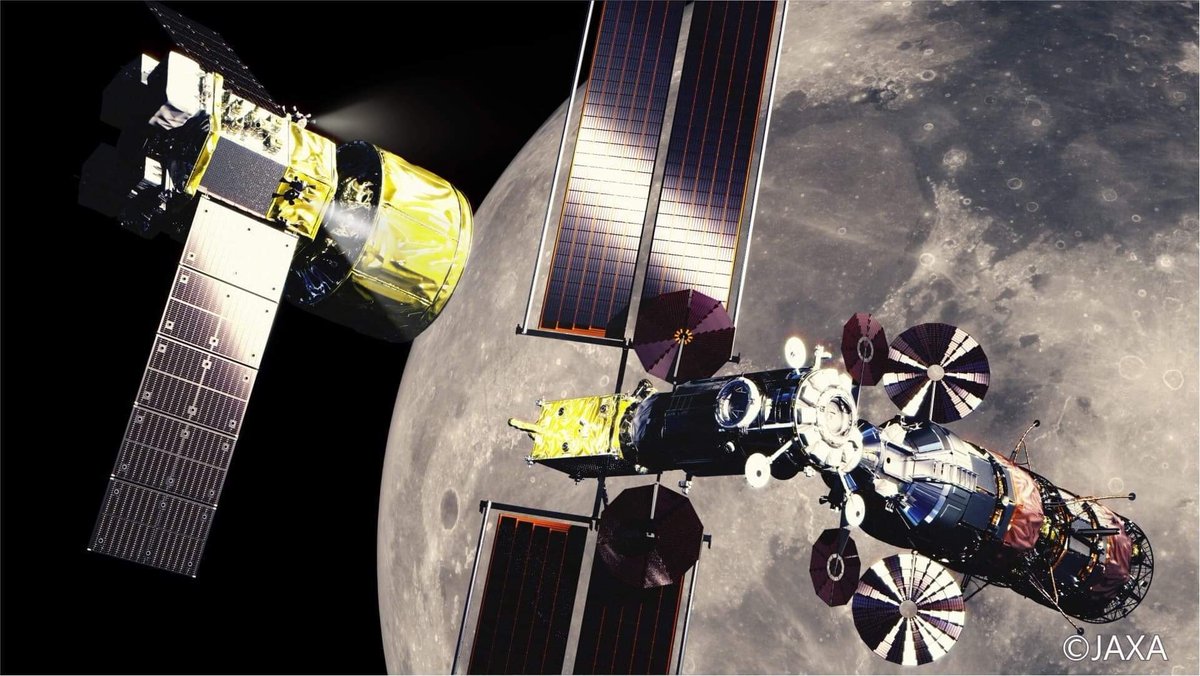
According to JAXA, HTV-9 is also delivering the "world's first space avatar" in the form of a camera-equipped robot that will allow users on the ground to "see, hear, feel and interact freely" with the station's interior. The project is part of a commercial partnership with ANA Holdings in Japan.
HTV-9 will be attached to an Earth-facing port on the station's Harmony module for about two months before being packed with trash and released from the station to burn up in Earth's atmosphere.
- Space Station's Robotic Cargo Ship Fleet (A Photo Guide)
- NASA, Japan Consider Joint Crewed Moon Missions
- JAXA: Japan's Aerospace Exploration Agency
Email Tariq Malik at tmalik@space.com or follow him @tariqjmalik. Follow us @Spacedotcom, Facebook and Instagram.
OFFER: Save 45% on 'All About Space' 'How it Works' and 'All About History'!
For a limited time, you can take out a digital subscription to any of our best-selling science magazines for just $2.38 per month, or 45% off the standard price for the first three months.
Join our Space Forums to keep talking space on the latest missions, night sky and more! And if you have a news tip, correction or comment, let us know at: community@space.com.

Tariq is the Editor-in-Chief of Space.com and joined the team in 2001, first as an intern and staff writer, and later as an editor. He covers human spaceflight, exploration and space science, as well as skywatching and entertainment. He became Space.com's Managing Editor in 2009 and Editor-in-Chief in 2019. Before joining Space.com, Tariq was a staff reporter for The Los Angeles Times covering education and city beats in La Habra, Fullerton and Huntington Beach. In October 2022, Tariq received the Harry Kolcum Award for excellence in space reporting from the National Space Club Florida Committee. He is also an Eagle Scout (yes, he has the Space Exploration merit badge) and went to Space Camp four times as a kid and a fifth time as an adult. He has journalism degrees from the University of Southern California and New York University. You can find Tariq at Space.com and as the co-host to the This Week In Space podcast with space historian Rod Pyle on the TWiT network. To see his latest project, you can follow Tariq on Twitter @tariqjmalik.










